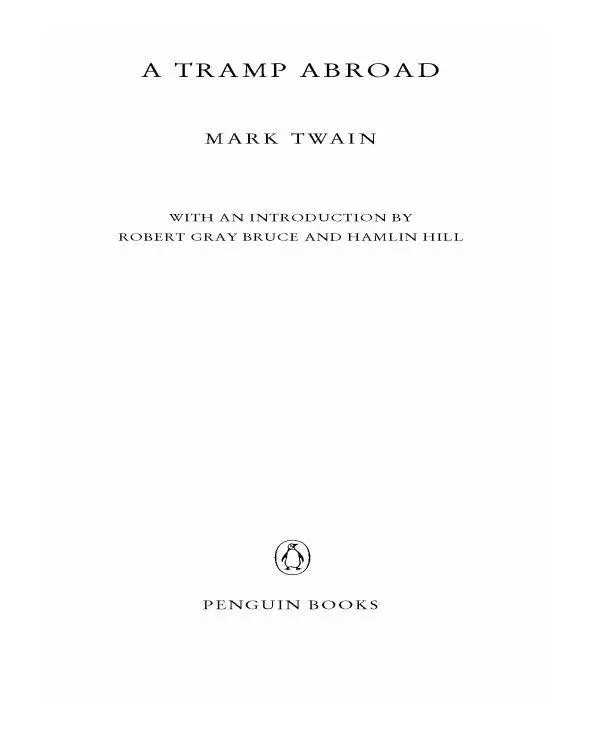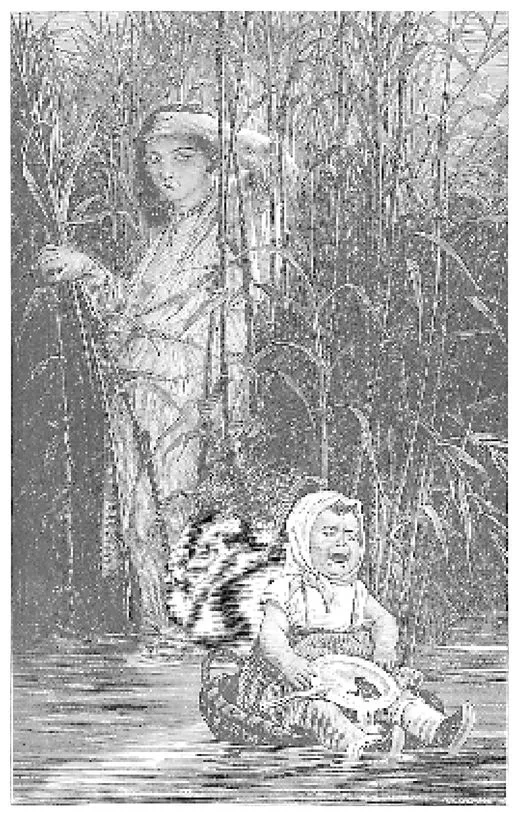A Tramp Abroad (Penguin ed.)

Table of Contents
Title Page
Copyright Page
Introduction
CHAPTER I
CHAPTER II
CHAPTER III
CHAPTER IV
CHAPTER V
CHAPTER VI
CHAPTER VII
CHAPTER VIII
CHAPTER IX
CHAPTER X
CHAPTER XI
CHAPTER XII
CHAPTER XIII
CHAPTER XIV
CHAPTER XV
CHAPTER XVI
CHAPTER XVII
CHAPTER XVIII
CHAPTER XIX
CHAPTER XX
CHAPTER XXI
CHAPTER XXII
CHAPTER XXII
CHAPTER XXIV
CHAPTER XXV
CHAPTER XXVI
CHAPTER XXVII
CHAPTER XXVIII
CHAPTER XXIX
CHAPTER XXX
CHAPTER XXXI
CHAPTER XXXII
CHAPTER XXXIII
CHAPTER XXXIV
CHAPTER XXXV
CHAPTER XXXVI
CHAPTER XXXVII
CHAPTER XXXVIII
CHAPTER XXXIX
CHAPTER XL
CHAPTER XLI
CHAPTER XLII
CHAPTER XLIII
CHAPTER XLIV
CHAPTER XLV
CHAPTER XLVI
CHAPTER XLVII
CHAPTER XLVIII
CHAPTER XLIX
CHAPTER L
APPENDIX
PENGUIN CLASSICS
A TRAMP ABROAD
Samuel Langhorne Clemens was born on November 30, 1835, in Florida, Missouri, about forty miles southwest of Hannibal, the Mississippi River town Clemens was to celebrate all his life. In 1853 he left home and earned a living as an itinerant typesetter, and four years later he became an apprentice pilot on the Mississippi, a career cut short by the outbreak of the Civil War. For five years, Clemens lived in Nevada and California, as a prospector and journalist. In February 1863 he first signed the pseudonym “Mark Twain” to a humorous travel letter. A trip to Europe and the Holy Land in 1867 became the basis of his first major book, The Innocents Abroad (1869). Roughing It (1872), his account of experiences in the West, was followed by a satirical novel, The Gilded Age (1873), Sketches: New and Old (1875), The Adventures of Tom Sawyer (1876), A Tramp Abroad (1880), The Prince and the Pauper (1882), Life on the Mississippi (1883), and his masterpiece, Adventures of Huckleberry Finn (1884). Following the publication of A Connecticut Yankee in King Arthur’s Court (1889) and Pudd’nhead Wilson (1894), Twain was compelled by debts to move his family abroad. By 1900 he had completed a round-the-world lecture tour and, his fortunes mended, he returned to America. He was as famous for his white suit and his mane of white hair as he was for his uncompromising stands against injustice and imperialism and for his invariably quoted comments on any subject under the sun. Samuel Clemens died on April 21, 1910.
Robert Gray Bruce and Hamlin Hill are members of the English Department at Texas A&M University. Hill is a retired Distinguished Professor who has published extensively on Mark Twain and American humor. Bruce has just completed his doctoral dissertation on black humor in American culture from the pre-Civil War period to contemporary fiction and film. Both teach courses on American humor and Mark Twain.

TITIAN’S MOSES

BookishMall.com
Published by the Penguin Group
Penguin Putnam Inc., 375 Hudson Street,
New York, New York 10014, U.S.A.
Penguin Books Ltd, 27 Wrights Lane,
London W8 5TZ, England
Penguin Books Australia Ltd, Ringwood,
Victoria, Australia
Penguin Books Canada Ltd, 10 Alcorn Avenue,
Toronto, Ontario, Canada M4V 3B2
Penguin Books (N.Z.) Ltd, 182-190 Wairau Road,
Auckland 10, New Zealand
Penguin Books Ltd, Registered Offices:
Harmondsworth, Middlesex, England
First published 1880
This edition with an introduction by
Robert Gray Bruce and Hamlin Hill published in
Penguin Books 1997
Introduction copyright © Robert Gray Bruce and
Hamlin Hill, 1997
All rights reserved
LIBRARY OF CONGRESS
CATALOGING IN PUBLICATION DATA
Twain, Mark, 1835-1910.
A tramp abroad / Mark Twain ; with an introduction by Robert Gray Bruce and Hamlin Hall.
p. cm.—(Penguin classics)
eISBN : 978-1-101-17722-8
1. Twain, Mark, 1835-1910—Journeys—Europe. 2. Europe—Description and travel. I. Bruce, Robert Gray. II. Hill, Hamlin Lewis, date. III. Title. IV. Series.
PS1321.A1 1997
818’.403—dc21 97-13725
[B]
http://us.penguingroup.com
INTRODUCTION
I.
On November 30, 1835, in the tiny village of Florida, Missouri, Samuel Langhorne Clemens was born to Jane Lampton and John Marshall Clemens. His parents, aspiring to gentility, had moved to Missouri in June 1835, believing that they would somehow find the stability and affluence that had eluded them in Kentucky and Tennessee. In 1839 they moved to Hannibal, Missouri, convinced that their chances for success would be better on the banks of the Mississippi. But, however much young Sam absorbed the Clemenses’ aspirations for success and wealth, the family was held together by the thinnest of possible threads.
In Hannibal, Sam received rudimentary formal schooling and the most famous informal education that American literature has ever savored. His experiences as a youth and young man became a major portion of American folklore.
1 comment